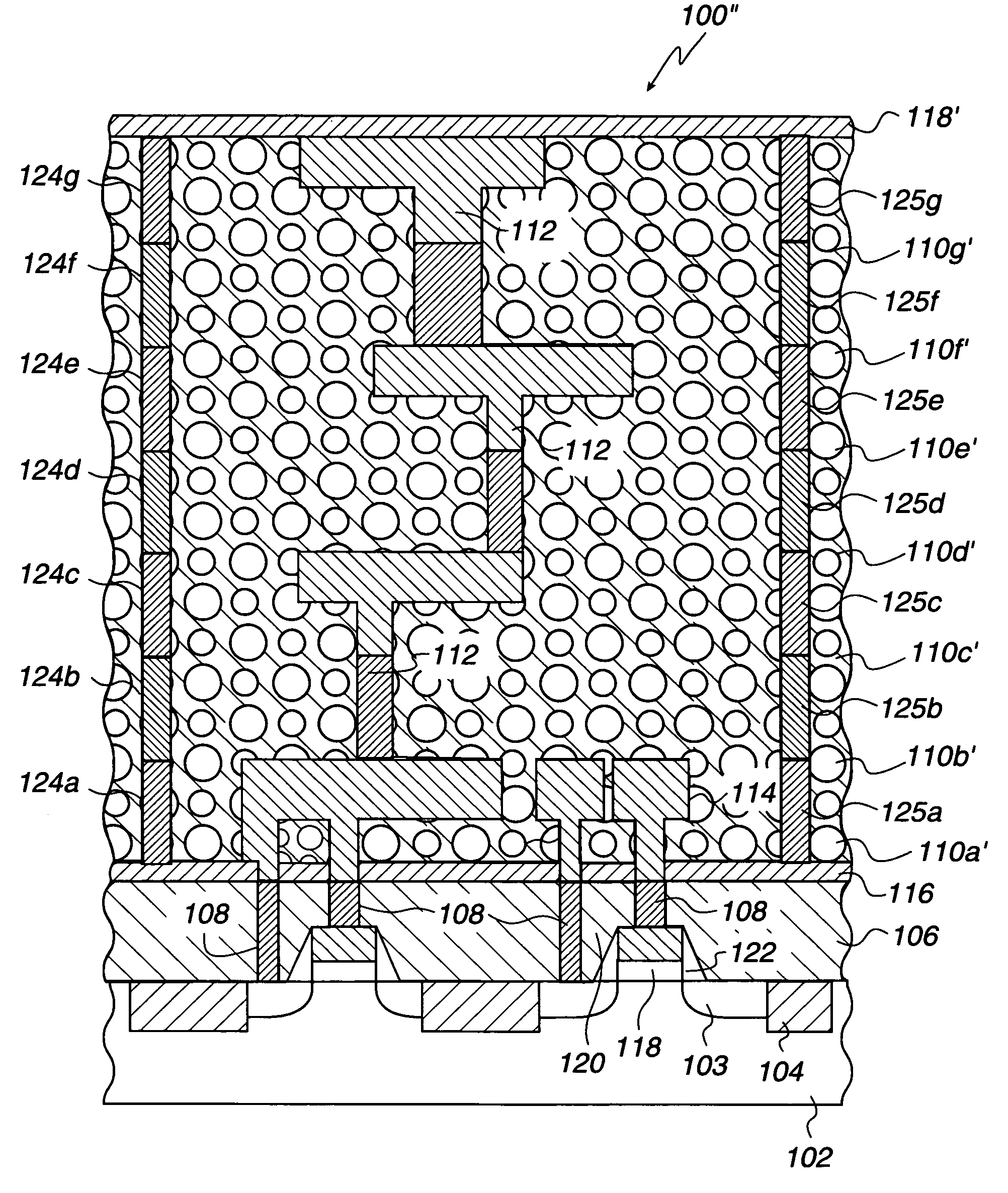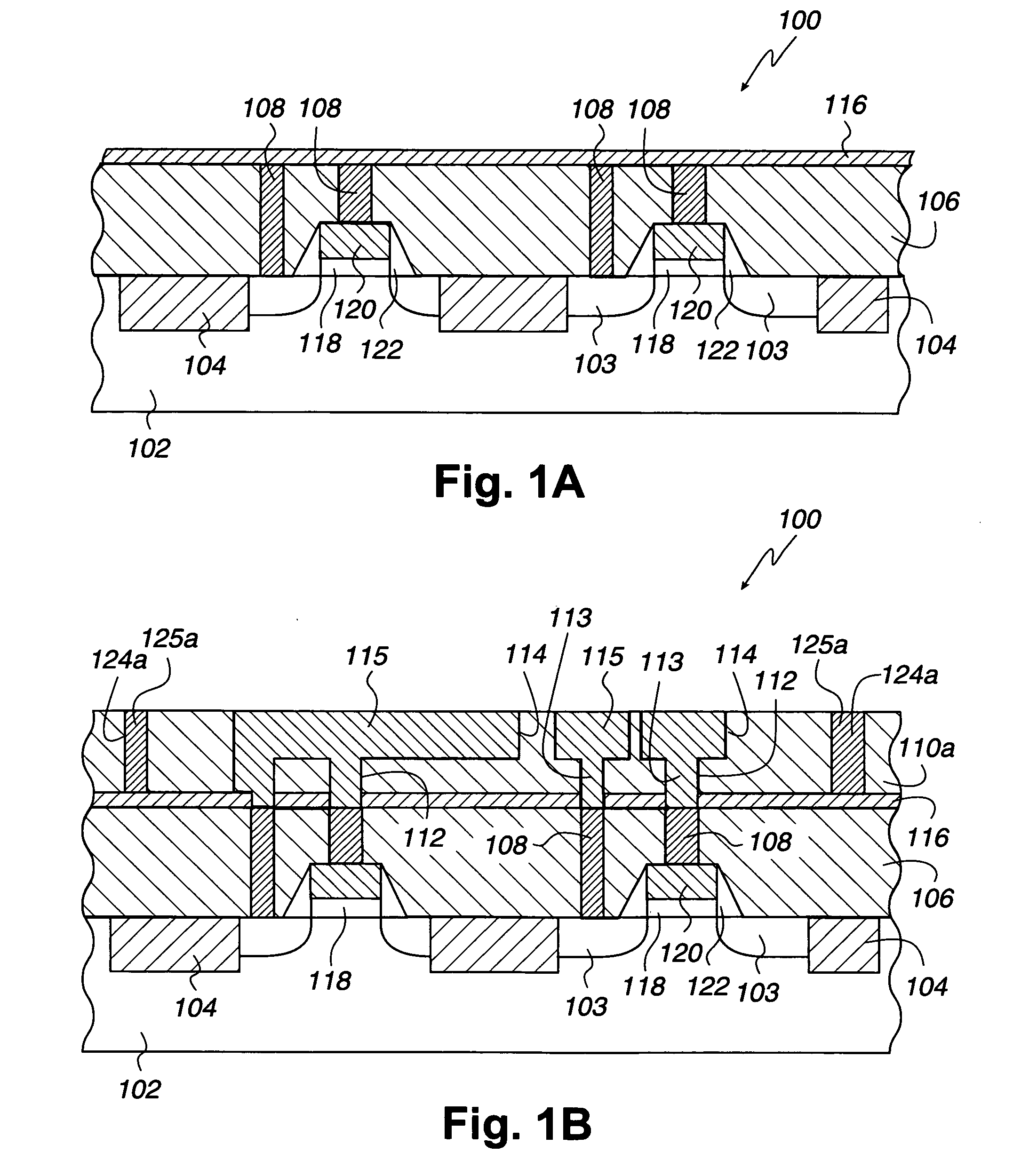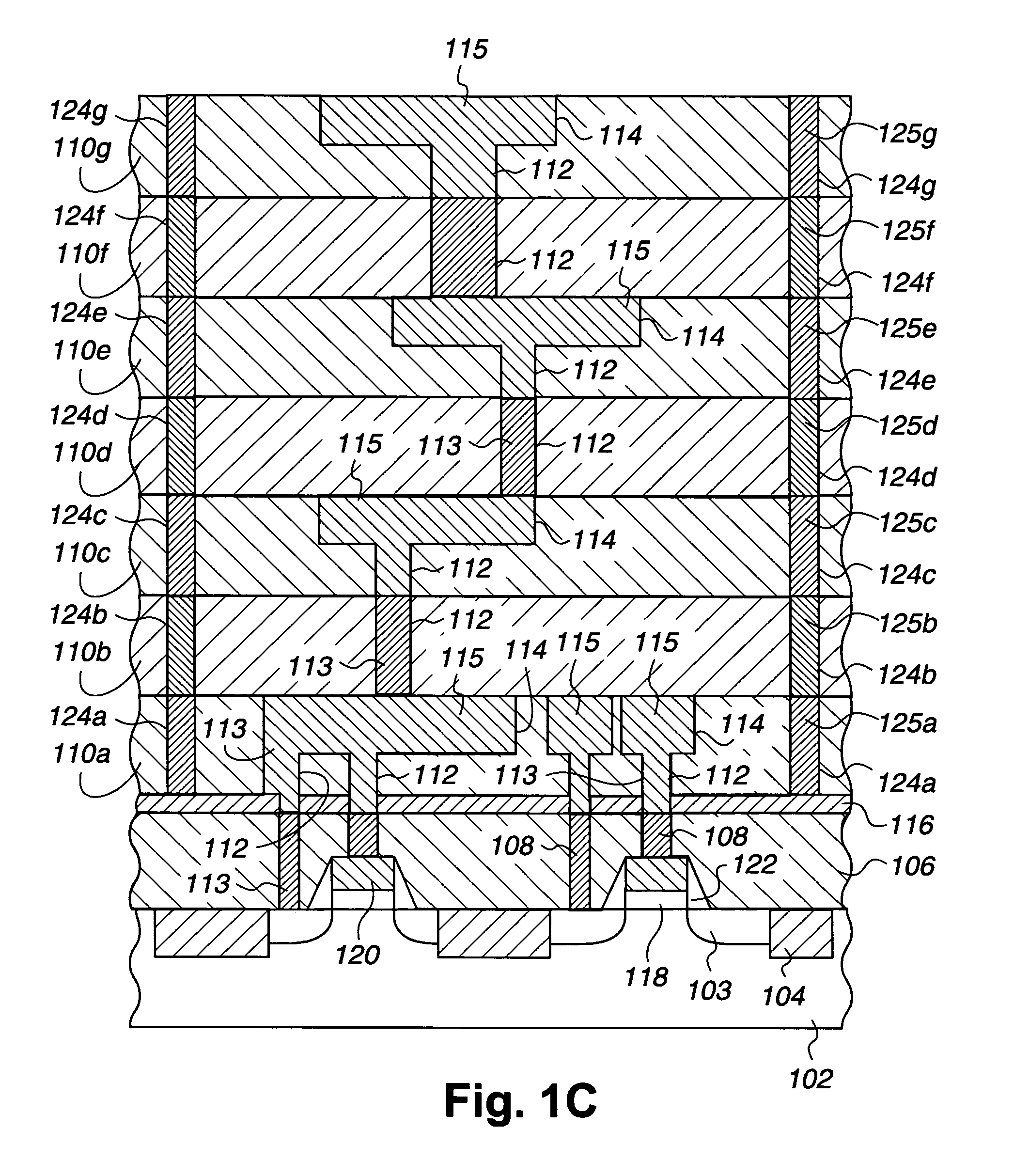Semiconductor structure implementing low-K dielectric materials and supporting stubs
a dielectric material and semiconductor technology, applied in semiconductor devices, semiconductor/solid-state device details, electrical apparatus, etc., can solve the problems of poor mechanical strength of porous dielectric materials, low possibility of cross-metallization line signal interference, and difficult to replace aluminum with copper. , to achieve the effect of reducing the capacitance of inter-metal dielectrics and fast integrated circuit devices
- Summary
- Abstract
- Description
- Claims
- Application Information
AI Technical Summary
Benefits of technology
Problems solved by technology
Method used
Image
Examples
Embodiment Construction
[0027]Embodiments for making semiconductor structures that optimize semiconductor performance by minimizing inter-metal dielectric capacitance are described. In one preferred embodiment, a sacrificial material is used during the fabrication of each layer of copper interconnects and then is etched out and replaced with an insulator having a low dielectric constant. In another embodiment, a plurality of stubs are formed in the sacrificial layer, thus creating nearly continuous supporting columns for when the sacrificial layer is etched away. In preferred implementations, the substantially continuous supporting columns of stubs are configured to extend from the passivation layer to a passivation-capping layer, thus forming a semiconductor structure having high structural integrity with reduced capacitance related delay. In a preferred embodiment, the plurality of stubs are constructed from copper. In another embodiment, the sacrificial layer is a dielectric and the low-K dielectric mat...
PUM
 Login to View More
Login to View More Abstract
Description
Claims
Application Information
 Login to View More
Login to View More - R&D
- Intellectual Property
- Life Sciences
- Materials
- Tech Scout
- Unparalleled Data Quality
- Higher Quality Content
- 60% Fewer Hallucinations
Browse by: Latest US Patents, China's latest patents, Technical Efficacy Thesaurus, Application Domain, Technology Topic, Popular Technical Reports.
© 2025 PatSnap. All rights reserved.Legal|Privacy policy|Modern Slavery Act Transparency Statement|Sitemap|About US| Contact US: help@patsnap.com



